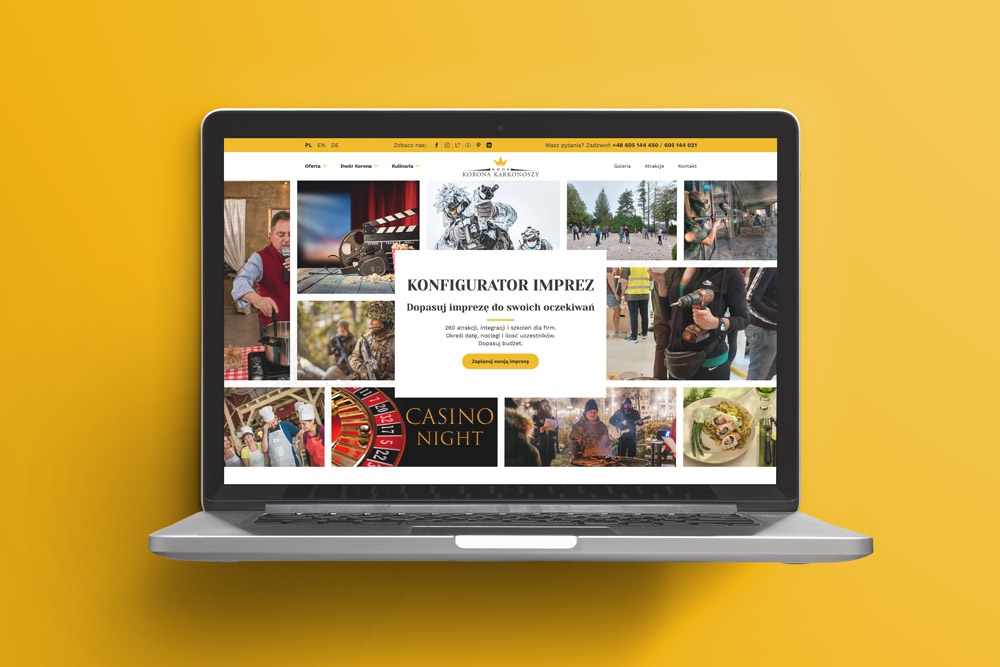Effective and effective teamwork requires cooperation and appropriate communication. These two elements have the greatest impact on the success of the team and the entire enterprise. Adequate communication in a group involves shaping interpersonal relationships during everyday communication on many levels. How to achieve it?
CLICK below in the Corporate Events Configurator banner

CLICK above in the Corporate Events Configurator banner
The effectiveness of the team's work depends on communication in the group.
We will help your crew achieve their goals effectively!
Communication in the group should be, above all, clear and understandable for all employees, and at the same time friendly and kind towards the interlocutor. There must be consistency between the verbal message and non-verbal expression. Messages should be clear and concise, and the process of sharing information should be based on empathy and understanding the attitudes and expectations of other interlocutors. The competences that make up proper communication are: active listening to others and respecting their feelings. Thanks to them effective communication in a group is possible.
Principles of teamwork must take into account the structure of information provision. Communicating in a group requires going through the individual integration steps and both theoretical and practical learning. It is an art that should be constantly refined and adapted to changing circumstances.
Behavior of employees and communication in the group
The group consists of people with different temperaments, personalities and communication skills. Such a mix of characters requires appropriate integration of members, which will be preceded by an analysis of how information is transferred between members of the group. Employees may encounter various problems at work, there may be conflicts, disputes and misunderstandings that affect the overall effect of the work. Therefore, the composition of the team cannot be accidental, forced or imposed by the employment structure.
The criteria for selecting members should result from the tasks set for the team as well as personal predispositions and competences. The team leader must develop a sense of when to say something and when not to. Improper criticism of one person can disrupt the communication of the entire group. Indiscreet behavior can increase unnecessary distance. Familiarity-building team meetings will help to increase trust and strengthen a leadership position, while increasing respect for all group members.

Communication in the group and its most important elements
Effective group communication has a clear goal: to exchange information, thoughts and ideas, and to share knowledge and ideas. It sounds very simple, although the process is not the easiest one. All because every person is different, every team is different, and every company shapes relations between employees differently. Communication in the group should be shaped by a variety of tailored tools leading to outcomes that have a positive impact on team members.
The most important components of effective communication are: active listening, concern for the correct flow of information, openness to the needs and opinions of others, providing constructive feedback and the ability to extinguish fires resulting from various types of crisis. In order for these elements to be implemented, words, gestures, sounds, letters, numbers or symbols, i.e. conventional signs, are used. Systems of such signs are called codes. The message is sent to the recipient via a route chosen by the sender, which is called a channel. We distinguish between one-way and two-way, symmetrical and asymmetrical, formal and informal, vertical and horizontal, and defensive and supportive communication.
Skillful conflict resolution
Effective communication of information is not the only goal of team communication. It also involves the skillful resolution of conflicts and crises that will arise in the group. How to deal with disputes in a team? Four effective strategies are outlined below:
- Cooperation as the most effective form of conflict resolution, resulting in a compromise satisfactory for both parties.
- Compete with fighting-minded groups with tough conditions and often pressure. The parties to the conflict do not listen to arguments or empathize with the other party. They treat a possible concession as a failure.
- Adjustment as the reverse of competition. The team cares about maintaining good relations with the opponent, so instead of fighting, they prefer to yield. Both sides show empathy and listen to their needs, which does not mean that they want to lose.
- Avoidance when both sides agree to avoid confrontation and unnecessary discussions. This approach leads to the lack of any findings.
Conflict management tools include various types of confrontational meetings, negotiations, exchange sessions, mediations, simulations of specific situations as well as arbitration.
CLICK below in the Corporate Events Configurator banner


